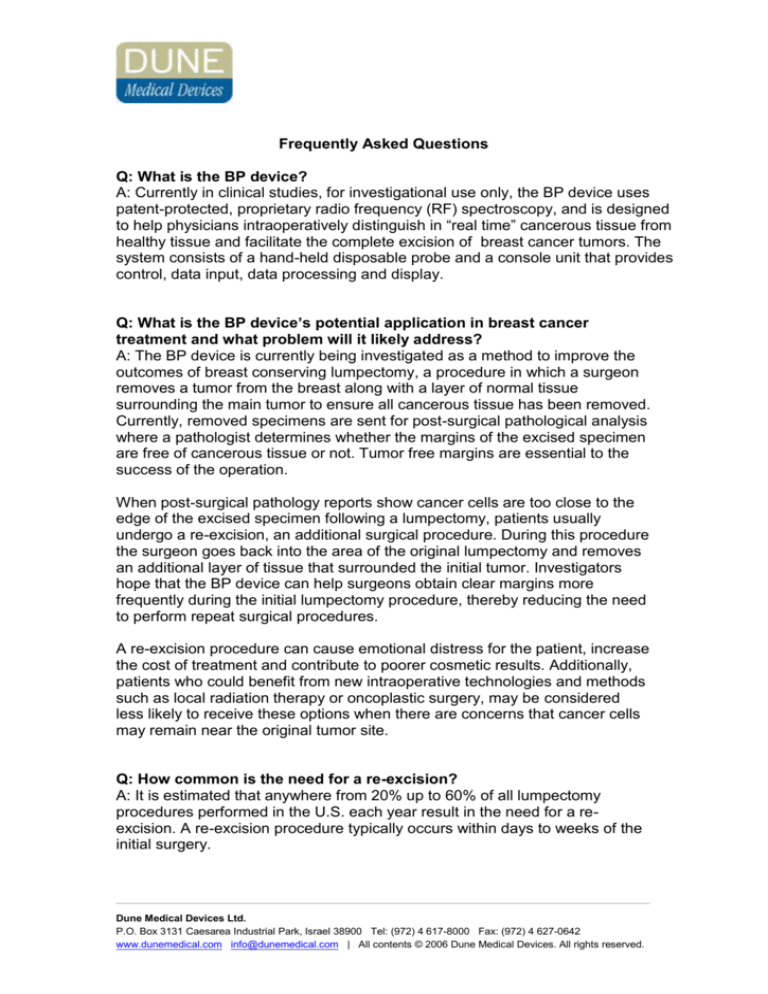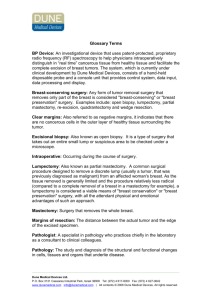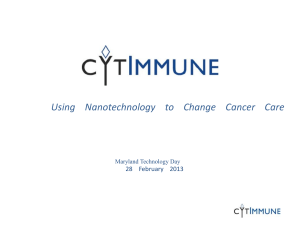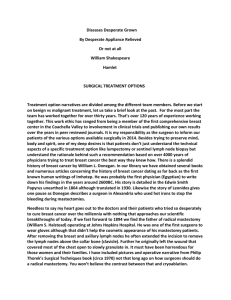
Frequently Asked Questions
Q: What is the BP device?
A: Currently in clinical studies, for investigational use only, the BP device uses
patent-protected, proprietary radio frequency (RF) spectroscopy, and is designed
to help physicians intraoperatively distinguish in “real time” cancerous tissue from
healthy tissue and facilitate the complete excision of breast cancer tumors. The
system consists of a hand-held disposable probe and a console unit that provides
control, data input, data processing and display.
Q: What is the BP device’s potential application in breast cancer
treatment and what problem will it likely address?
A: The BP device is currently being investigated as a method to improve the
outcomes of breast conserving lumpectomy, a procedure in which a surgeon
removes a tumor from the breast along with a layer of normal tissue
surrounding the main tumor to ensure all cancerous tissue has been removed.
Currently, removed specimens are sent for post-surgical pathological analysis
where a pathologist determines whether the margins of the excised specimen
are free of cancerous tissue or not. Tumor free margins are essential to the
success of the operation.
When post-surgical pathology reports show cancer cells are too close to the
edge of the excised specimen following a lumpectomy, patients usually
undergo a re-excision, an additional surgical procedure. During this procedure
the surgeon goes back into the area of the original lumpectomy and removes
an additional layer of tissue that surrounded the initial tumor. Investigators
hope that the BP device can help surgeons obtain clear margins more
frequently during the initial lumpectomy procedure, thereby reducing the need
to perform repeat surgical procedures.
A re-excision procedure can cause emotional distress for the patient, increase
the cost of treatment and contribute to poorer cosmetic results. Additionally,
patients who could benefit from new intraoperative technologies and methods
such as local radiation therapy or oncoplastic surgery, may be considered
less likely to receive these options when there are concerns that cancer cells
may remain near the original tumor site.
Q: How common is the need for a re-excision?
A: It is estimated that anywhere from 20% up to 60% of all lumpectomy
procedures performed in the U.S. each year result in the need for a reexcision. A re-excision procedure typically occurs within days to weeks of the
initial surgery.
Dune Medical Devices Ltd.
P.O. Box 3131 Caesarea Industrial Park, Israel 38900 Tel: (972) 4 617-8000 Fax: (972) 4 627-0642
www.dunemedical.com info@dunemedical.com | All contents © 2006 Dune Medical Devices. All rights reserved.
Q: What is the primary reason for the need to perform so many reexcisions?
A: Re-excisions are needed in most cases where there is a positive margin.
This is caused by the inability of current practice and commercially available
technology to definitively detect tumor margins and facilitate complete
excision during the original lumpectomy
Q: What methods are currently employed to detect tumor margins?
A: The current “gold standard” for detecting tumor margins is post-surgical
pathology tissue analysis. While post-procedural pathology results are
definitive, they do not address the unmet need of enabling accurate tumor
margins detection during the original lumpectomy. Current techniques
employed during surgery (intraoperatively) include wire localization, touchprep cytology, frozen section analysis and specimen imaging. However, these
techniques are not widely perceived as effective.
Q: What is the potential significance of the Dune BP device in breast
cancer treatment?
A: Depending on the results of clinical trials, the BP device could be the first
technology that enables surgeons to intraoperatively determine, in real time,
whether the entire malignant tumor was removed. It is hoped that this
technology will significantly reduce the need for repeat surgeries.
Q: How does the Dune BP device work?
A: Applied by hand to the surface of breast tissue, the BP probe is designed
to capture the unique RF spectroscopy “signature” of cancerous vs. noncancerous cell clusters. Using the BP device intraoperatively, surgeons can
react to the information it yields before the procedure is over and, where
appropriate, remove suspected residuals.
Q: When will the BP device be commercially available for clinical use in the
United States?
A: Currently, the BP device is CE marked in Europe and is in clinical trials in
the US. The intention is to release it in the US market by early 2008 following
completion of the FDA pivotal trial.
Dune Medical Devices Ltd.
P.O. Box 3131 Caesarea Industrial Park, Israel 38900 Tel: (972) 4 617-8000 Fax: (972) 4 627-0642
www.dunemedical.com info@dunemedical.com | All contents © 2006 Dune Medical Devices. All rights reserved.












